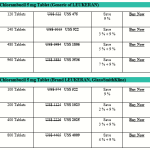Rigid Core Flooring: SPC vs WPC
If you’re thinking about a home remodel, rigid core flooring is one of the best options available today. It looks like real wood but is much more durable and longer-lasting than traditional materials. Not only that, it’s easier to install and maintain as well! But what are the differences between the two main categories — SPC (stone plastic composite) and WPC (wood-plastic composite)? Here we’ll explore their various properties so you can decide which type of rigid core flooring is right for your renovation project.
What is Rigid Core Flooring (RCF)?
Rigid Core Flooring (RCF) is a type of luxury vinyl flooring that provides an incredibly durable and realistic alternative to hardwood. RCF combines layers of virgin vinyl and high-density fiberboard with a rigid core, resulting in a waterproof flooring system and resistant to scratches, dents, and fading. The rigid core ensures stability, while the attractive visual layer provides a natural look that closely resembles solid wood or stone. Additionally, RCF requires minimal maintenance, making it an ideal choice for busy households and commercial spaces. Available in many colors and styles, RCF can be easily customized to fit any design scheme or space needs. With its beauty, durability, low maintenance requirements, and affordability, RCF is an excellent choice for any flooring project.
SPC vs. WPC – what’s the difference?
Rigid Core Flooring is available in two main varieties – Stone Polymer Composite (SPC) and Wood Polymer Composite (WPC). SPC flooring tiles is made from stone dust mixed with plastics, while WPC flooring combines recycled wood pulp and plastic composites. Both are highly durable and offer superior performance compared to traditional vinyl or laminate flooring.
SPC has a more rigid core than WPC, making it better able to withstand heavy foot traffic. Additionally, the high density of the core material makes SPC less prone to dents or scratches from furniture or other objects. On the downside, SPC isn’t as resistant to heat as WPC, so it may not be suitable for areas near fireplaces or other heat sources.
On the other hand, WPC flooring is slightly more forgiving in terms of temperature changes and has a softer core that feels warmer underfoot. Additionally, it’s often less expensive than SPC, making it a great choice for those who want to save money while still getting a quality product. However, WPC isn’t as resistant to scratches or dents as SPC and may require more frequent maintenance.
Overall, SPC and WPC provide excellent durability and performance at an affordable price. Depending on your individual needs and desired look, either option can be the perfect fit for your home or business.
Installation and care of RCF flooring
RCF flooring can be a great choice for various applications, but it is important to properly install and care for your RCF flooring to maximize its performance.
Installation:
When installing RCF flooring, it’s important to use the right tools and materials. Typically, this will mean using self-leveling compounds or epoxy-based mortars and sealers. If you’re installing the floor yourself, make sure you read all instructions before proceeding. There are several different installation methods available, including floating, glue-down, and direct stick installations; each requires specific preparation steps before starting, so be sure to look up your specific installation requirements before beginning work.
Caring for RCF Flooring:
Proper care and maintenance of an RCF floor will ensure it looks great and lasts longer. Regular cleaning is the key to extending its life; use a mild cleaner about once a month or as needed. Sweep, vacuum or mop regularly to remove dirt, dust, and debris to keep the surface from scratching when walking on. If there are liquid spills, clean them up promptly to prevent staining and damage. For tougher messes, it’s best to contact a professional for assistance. Additionally, avoid using harsh chemicals and always use mats at doorways and other high-traffic areas to reduce wear and tear.
With the right care and maintenance, RCF flooring can look great and last for years. Taking the time to properly install and maintain your flooring will ensure that it looks its best for a long time.
Pros and cons of Rigid Core Flooring
Pros:
– Rigid core flooring is incredibly durable and can handle high-traffic areas. This makes it a great choice for commercial buildings and homes with pets or children.
– It’s easy to install and maintain, so you don’t have to hire a professional installer to get the job done.
– Rigid core flooring comes in various styles, so you can find something that will match your existing decor perfectly. Additionally, because rigid core floors are made from layers of vinyl material, they are waterproof and suitable for use in bathrooms and kitchens.
– Finally, many rigid core floors come with an integrated acoustic underlayment which helps to reduce noise from foot traffic.
Cons:
– Rigid core floors can be more expensive than other types of flooring, such as engineered wood or laminate. Additionally, because they are made from multiple layers of vinyl material, they can be prone to scratches and dents if not properly cared for.
– Because rigid core floors are thicker than traditional floors, you may need to adjust doorways to fit correctly.
– Finally, some rigid core flooring products contain phthalates which can release potentially harmful chemicals into the air. Check the ingredients list before purchasing any type of flooring product to ensure it is safe for your family’s health.
Overall, rigid core flooring is a great choice for those looking for an incredibly durable and stylish option. You can enjoy this flooring type for years to come with proper installation and maintenance.
How to choose the right RCF flooring for your home?
When choosing the right RCF flooring for your home, it is important to consider several factors. These include the desired look and feel, durability, maintenance requirements, cost, noise insulation levels, and environmental impact.
The first step in choosing the right RCF flooring for your home is determining the desired look and feel. For example, choose between hardwood planks or tiles over softwood plank or bamboo options. Hardwoods are usually more expensive but will last longer if properly maintained. Softwoods tend to be less expensive but require regular sealing and refinishing to keep them looking their best. Bamboo is also popular due to its eco-friendly qualities and low-maintenance upkeep requirements.
It is also important to consider the level of durability required. Hardwood flooring is known for its strength and longevity, while softer woods may require more regular maintenance. Consider how much traffic your home receives to determine which material best suits your needs.
Maintenance requirements are also important when choosing the right RCF flooring for your home. Hardwood floors typically only require periodic cleaning with a damp mop or vacuum cleaner. Softwoods may need to be regularly treated with sealants and other products to protect them from moisture damage. Bamboo requires special care due to its unique properties.









